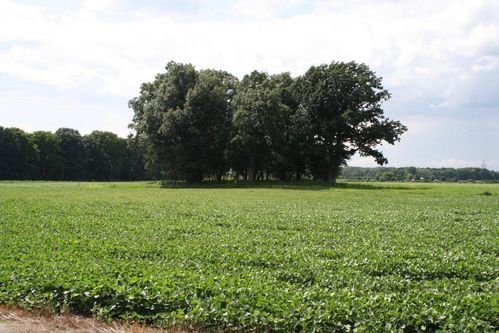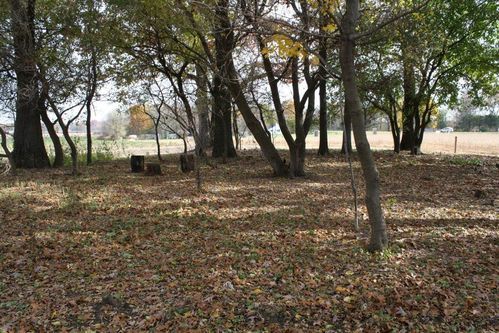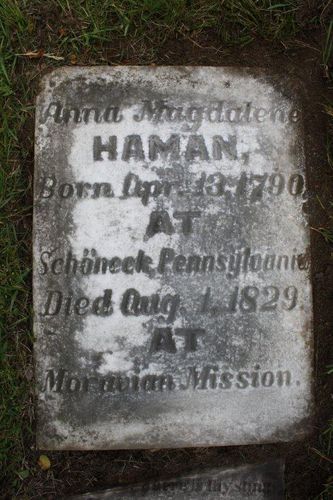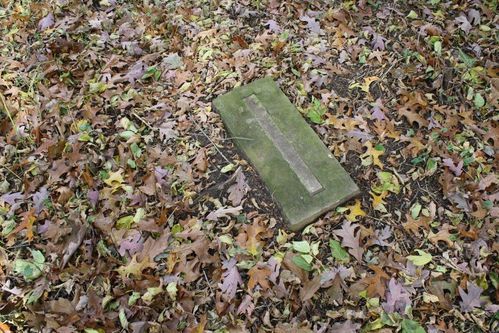This is a PRIVATE website owned by John Skakel. Contact us HERE
Cemeteries Office Staff have asked that users NOT contact them with questions directly.
God's Acre
The Old Fairfield Hutberg Cemetery
With Special Thanks To Darryl Stonefish and the Delaware Nation of Moraviantown

Hutberg Cemetery as we see it today.
Please note that Shoenfeld is a direct translation of Fairfield.
Geographic Locations.
probable farm buildings middle 42.58712° 81.90529°
probable church building middle 42.58700° 81.90559°
potter's field middle 42.58696° 81.90591° NE to SW 30' NW to SE 70'
W corner 42.59681° 81.90518°
back of Hutberg 42.58683° 81.90577°
babies area # 1 inside of Hutberg Cemetery 42.58664° 81.90551°
base of stone visible inside Hutberg. Likely base for Haman Monument. 42.58672° 81.90537°
baby area # 2 inside of Hutberg Cemetery 42.58654° 81.90540°
S corner 42.58632° 81.90533°
E corner 42.58673° 81.90486°
To better understand this historical site, please see also the history of the NEW Fairfield Cemetery Here

Diagram showing Old Hutberg in relation to Fairfield
The other square similar to the cemetery
was a large turnip garden.

Part of God's Acre as we see it today
To understand Hutberg Cemetery, you need to understand a bit of history of Fairfield. Please Click
See more photos of the Cemetery and the stones that used to be located there that are now in Bothwell cemeterey
The Old Hutberg Cemetery is located just North West of the Fairfield Museum on the former hwy 2 now Longwood's Road. There are a lot of misunderstood facts about it,
Hutberg was not a cemetery of war. It was indeed a cemetery of peace. The Moravians along with many Deleware Natives came to Fairfield to find peace after a terrible massacre in their former home lands. They thought that they were so far away from everything that no one would bother them. but instead they built almost on top of what was to become a battle in the War of 1812. This was not a huge battle. In fact it was relatively small. BUT it was a very important one in our history. Those soldiers and native warriors under Chief Tecumseh who died on the field of battle were not interred here though. They rest elsewhere.
To see the photos more clearly please expand your screen. With most browsers use Control and +. Then use Control and 0 to return to normal.

Haman Anna Magdalene's stone now
in Bothwell was originally in Hutberg.
The Probable base of her monument
still resting in Old Hutberg Cemetery
One of the oldest monuments in Chatham-Kent.

Likely the base of Haman Anna Magdalene's monument
There are really two cemeteries in the Hutberg grounds. One is about 75 feet in front of the other.
The Christian Natives in good standing were interred in the front cemetery. The non Christian folks were interred in the Potter's Field in back. That area is at the moment not marked permanently. It has been unmarked decades.
It has been documented apparently that many times in Moravian Cemeteries that men were interred together. Married women together. Babies together. Young girls together. etc. We do not have any documentation on this being done at Hutberg.
The first burial in the Hutberg Cemetery must have been Thomas, Grandson of the Delaware Chief Netawatwes. He did on May 8 of 1792. The Moravians came to Fairfield at slightly different times over a few days, but this was only 3 days after the Sensemanns and Brother Edward first came to the site.
See a list of the names of the deaths in OLD Fairfield as listed in their Diary.
There is one base for a stone that can be seen on the site. The stones from Hutberg were moved by the Moravian Missionaries to Bothwell Cemetery when they moved out of Moraviantown leaving the mission work there to others. Those stones can now be seen in Bothwell Cemetery in the very back Eastern Corner. It is very likely that the stone base still to be seen in Hutberg is for Anna Magdalene Haman. The stone sizes match exactly, so unless there was two stones of that exact size in Hutberg (unlikely), that is the burial that the stone indicates.
We do know that the Moravians moved the monuments to Bothwell when they withdrew from Moraviantown. However, we do not know if any remains were moved.
Among the last burials in Hutberg were Chief Phillip Jacobs, Jorger Isaac Torgersten, and Mary Ann Vogler.
There are remains of three small buildings in the area. It is known that Chief Phillip Jacobs lived near here and these could be all or part of his farm.
There was a church located on the site near the cemetery for over 20 years. Around 1843 the Methodist Church Circuit Riders began to visit the Moravian Mission, and in 1850 a church was built. It is said to have cost $300 gold, 1/3 of which was paid for by the Methodist Society. However, this they thought gave them license to "Run" the church, and soon they found the doors locked on them. The Church of England was invited in and they took over until some time after the funeral of Chief Phillip Jacobs in 1870. Darryl Stonefish has mentioned that this transfer to a less strict church had a bit to do with the Moravians finally leaving the mission in 1903. This last fact gives it a much more prominent place in history than we might ordinarily give it.
Note. On April 7 1794, in the Fairfield Diary it mentions... "The brothers cleaned up the cemetery and built a fence around it."
SPECIAL NOTE: When the Archaeological and Reconstruction work on the Old Fairfield site was being considered in the late '40's and early '50's, the land for the project was purchased from Wm R Leverton.
It is extremely important that if you visit this or other native cemeteries that you treat them with a great deal of respect. Native culture includes the belief that the spirit of the deceased person lives on through these remains. Places like this are VERY sacred to them.
See more photos of the Cemetery and the stones that used to be located there that are now in Bothwell cemetery
The Outpost Mission at Dencke (Danke, Donkey) Creek near Florence
Researchers See information on the small cemetery for the outpost.
With special thanks to Darryl Stonefish and the Delaware Nation.
With references from Wilderness Christians by Elma E Gray
And a history of the Delaware Nation of Moraviantown by Darryl K Stonefish.